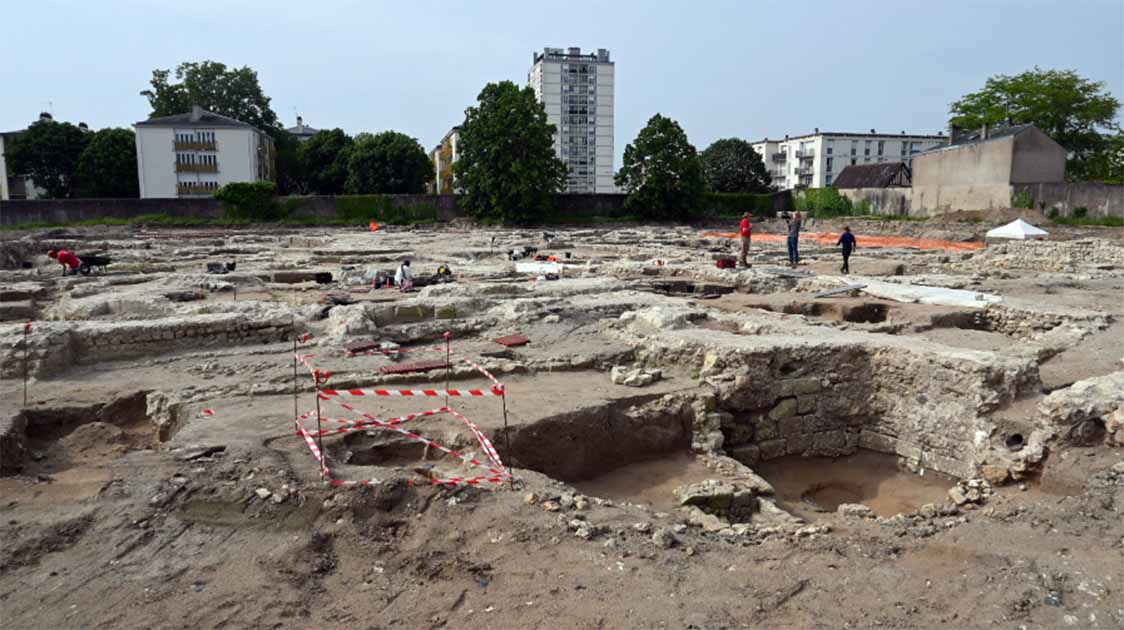Beaumont Abbey: Unveiling the Home of Benedictine Nuns
In an ambitious archaeological endeavor, Beaumont Abbey, located in Indre-et-Loire, France, has been fully excavated, revealing layers of history dating back 800 years. This monumental 14-month project, led by Philippe Blanchard of the National Institute for Preventive Archaeological Research (Inrap), has unearthed the complete structure of the medieval and modern abbey, providing unparalleled insights into its extensive and varied past.
A Unique Archaeological Endeavor
According to the report published on INRAP, the excavation of Beaumont Abbey stands out in European archaeology as the first project to completely uncover an entire abbey, including its church, cloister, gardens, cemeteries, and surrounding structures.
Philippe Blanchard highlights the exceptional nature of this undertaking, stating, "This is the first time in Europe that the entire space of an abbey, including the gardens, has been excavated in one go." The comprehensive nature of this excavation has allowed researchers to trace the abbey's evolution from its foundation in 1002 to its closure in 1790, when the Benedictines were expelled, and even earlier, revealing remnants of the village of Beaumont from the 9th and 10th centuries beneath the abbey.
- Reading Abbey: Ruins Are A Reminder of Medieval Religious Strife
- The Abbey Library of St. Gall: One of the Oldest Working Libraries in the World

Orthophotographic montage of the excavated remains of Beaumont Abbey, France. (© D. Godignon/ Inrap)
Discoveries Spanning Centuries
The findings at Beaumont Abbey provide a vivid picture of medieval and early modern religious life. The excavation uncovered the abbey church's three distinct architectural phases, reflecting the site's evolution over centuries. The initial structure, a modest church with a flat apse, possibly dates back to a chapel mentioned in records from the 9th century. This was succeeded by a larger, 52-meter-long church with an apse flanked by two chapels in the 11th or 12th century, and later, an ambulatory was added, extending the church to 55 meters (180 ft) in length.
The site has also provided insight into the lives of the nuns who inhabited the abbey. The division between choir sisters, often from noble families, and lay sisters, from more humble backgrounds, is evident in their differing roles and living conditions. The choir sisters engaged in managing the estate and prayer, while the lay sisters were dedicated to labor within the abbey.
- Hundreds of Skeletons Uncovered During Westminster Abbey Excavation
- Sweetheart Abbey, a Shrine to a Beautiful Scottish Love Story
The Significance of Burials
One of the most significant aspects of the excavation is the careful uncovering of 890 burials, offering a unique opportunity to study the health, diet, and origins of the abbey's inhabitants. These burials, which include a variety of individuals from nuns to the poor and possibly servants, provide valuable data for understanding the social stratification and health conditions of past populations.

Sarcophagi unearthed in the chapter house. (© Jean Demerliac/Inrap)
Preserving History and Memory
The excavation has also brought to light the rich material culture of the abbey, from the everyday objects used by the nuns to the elaborate tombs of the chapter house, indicating the importance of this space for religious activities and burials. The discovery of numerous artifacts, including religious medals, statuettes, and even 18th-century porcelain, further illustrates the complex cultural and religious practices at Beaumont Abbey.
The findings from Beaumont Abbey not only shed light on the religious and social lives of its inhabitants but also provide a tangible connection to the past, preserving the memory of a site that has witnessed centuries of history.
As the post-excavation analysis continues, researchers like Blanchard hope to delve deeper into the lives of those who lived and were buried at the abbey, enhancing our understanding of their health, origins, and the broader societal structures of the time. This comprehensive excavation opens new avenues for the study of religious life in medieval and early modern Europe and sets a precedent for future archaeological endeavors.
Top image: General view of the excavation of Beaumont Abbey in Indre-et-Loire. Source: © Mathilde Noël/Inrap
References
INRAP reporter, 2024. ‘Beaumont Abbey Excavated in its Entirety (Indre-et-Loire)’. INRAP. Available at: https://www.inrap.fr/l-abbaye-de-beaumont-fouillee-dans-son-integralite-indre-et-loire-17815

















